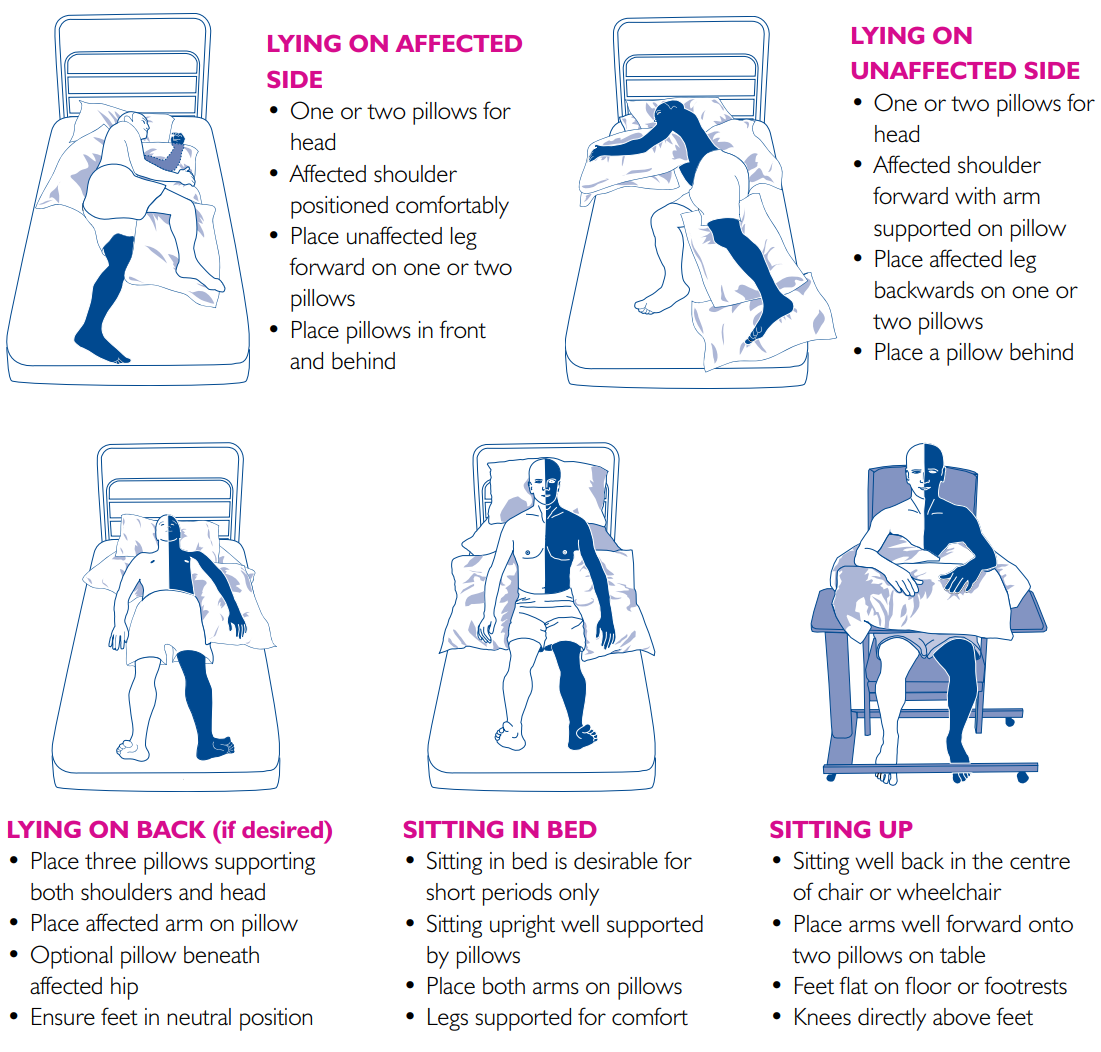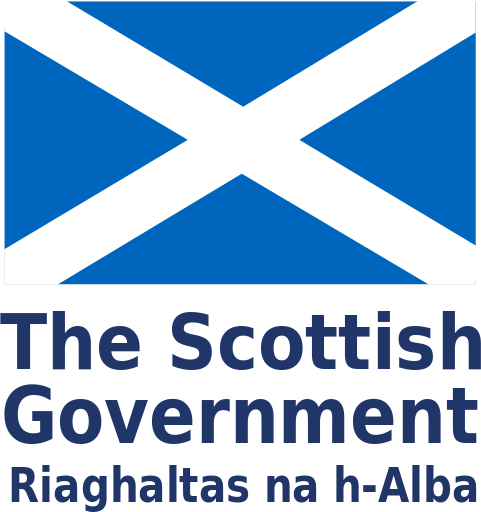This chart suggests possible positioning options for people affected by stroke. After a stroke people can experience differing physical problems, and therefore careful positioning and placement of pillows can be made to achieve safe and comfortable postures for any individual. Benefits of change of positions reduce risk of chest infection, pressure sores, and increase person’s ability to participate/engage. Occupational therapy may provide specialist seating which can assist with positioning. Regular positional changes should be carried out and documented.
Illustrations – Side affected by stroke is shown in blue. Pictures do not depict bed rails.

Careful positioning and placement of pillows can be used to achieve safe and comfortable postures. Pictures do not depict bed rails. Affected stroke side is in blue.
LYING ON AFFECTED SIDE
• 1-2 pillows for head
• Affected shoulder positioned comfortably, fully supported, not trapped under patient
• Unaffected leg forward on 1 or 2 pillows
• Pillows in front and behind
• Bed may be tilted back by
around 10 degrees
LYING ON UNAFFECTED SIDE
• 1-2 pillows for head
• Affected shoulder forward, arm supported on pillow
• Affected leg backwards on 1 or 2 pillows, with foot well supported
• Pillow behind back
• Move regularly. Encourage hip and knee flexion
LYING ON BACK (if desired)
• 3 pillows supporting both shoulders and head
• Affected arm on pillow
• Optional pillow beneath affected hip
• Ensure feet in neutral position
SITTING IN BED
• Sitting in bed is desirable for short periods only
• Sitting upright well supported by pillows
• Both arms on pillows, with position frequently changed
• Legs supported for comfort
SITTING UP
• Sitting well back in the centre of chair or wheelchair
• Place arms well forward onto two pillows on table
• Feet flat on floor or footrests
• Knees directly above feet
NB: Patients with significant motor impairment should undergo postural stability assessment by
a qualified person, especially prior to sitting out of bed. Careful positioning of patients wearing
Intermittent Pneumatic Compression (IPC) sleeves should also be taken into consideration.
Page last reviewed: 17 Jul 2023


